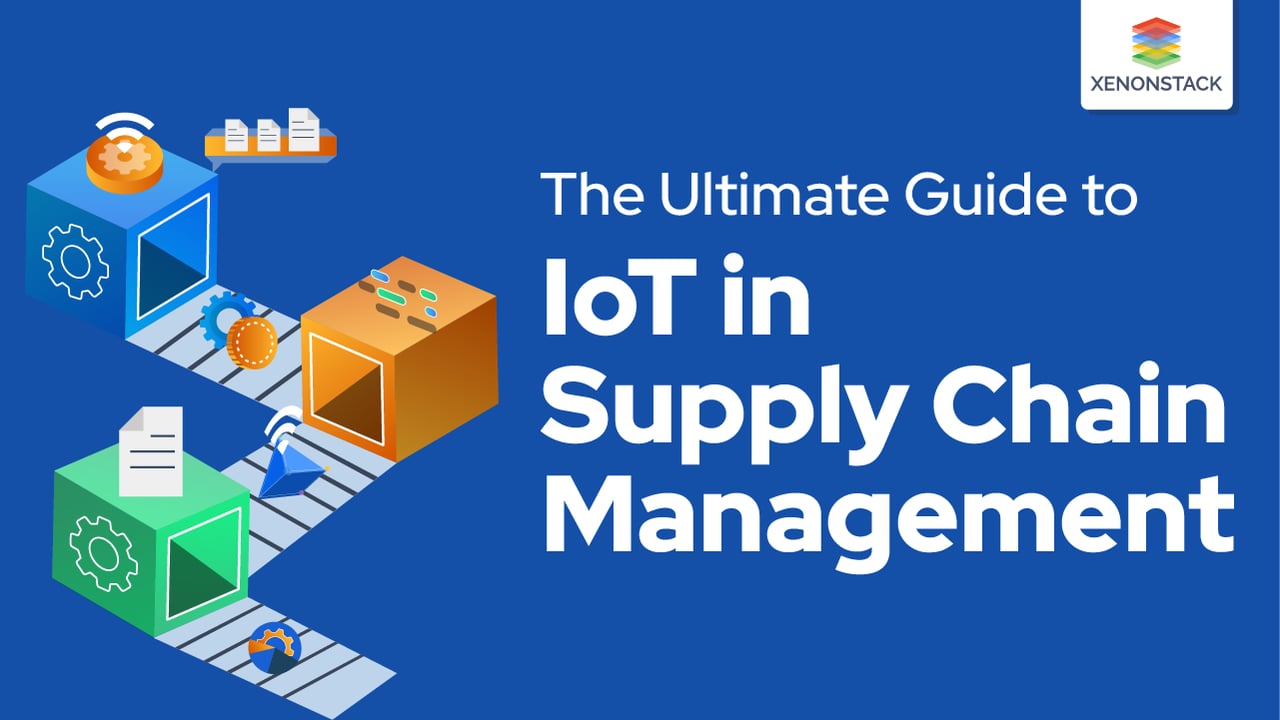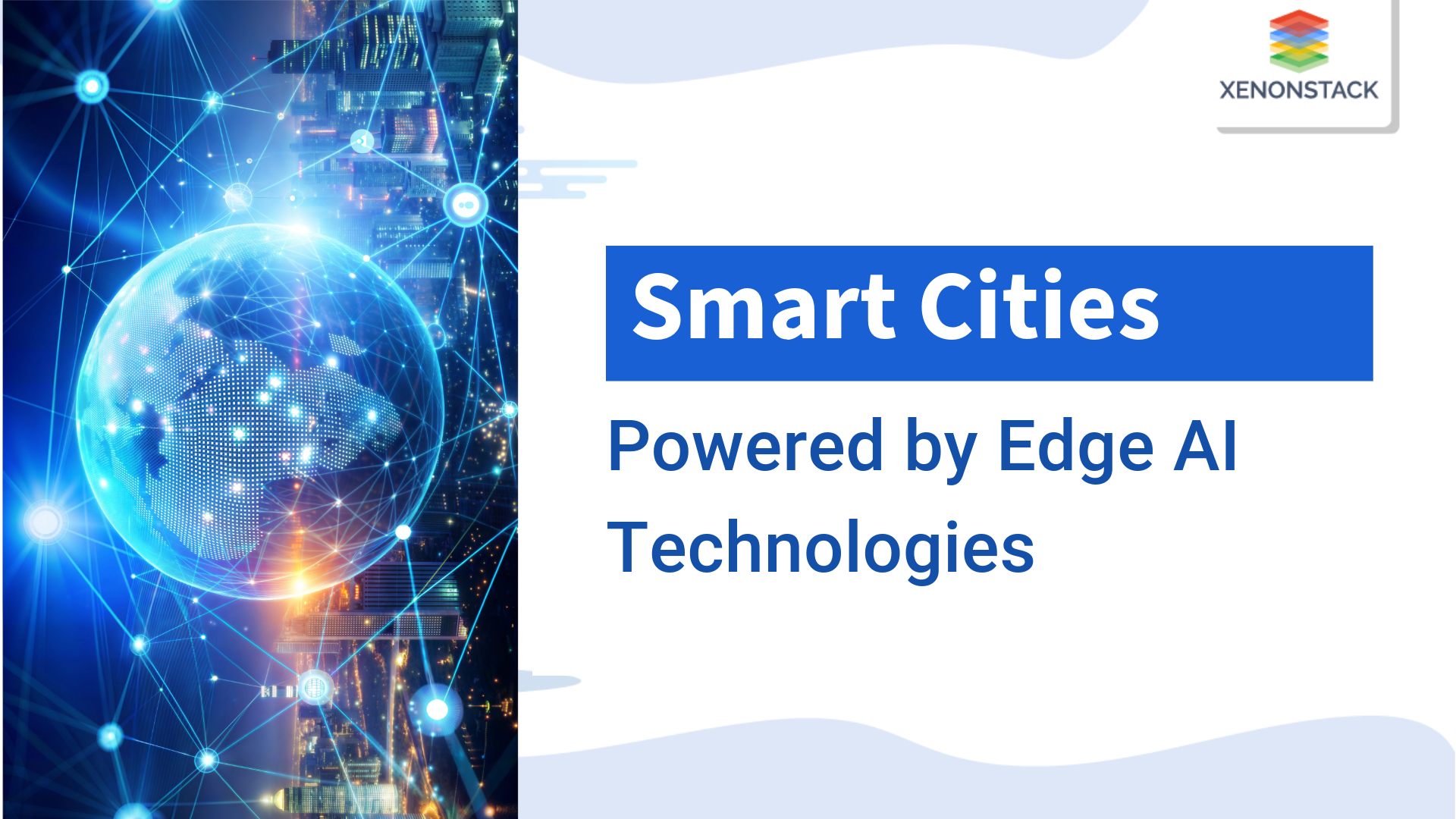
Introduction to Supply Chain Management
Supply chain management is essential to the success and competitiveness of enterprises in the modern, globalized economy. Traditional supply chain procedures frequently run into problems, including manual tracking, poor visibility, and sluggish information flow. The Internet of Things (IoT) enters the picture to change the way supply chains function. Connecting common items and equipment to the Internet allows them to interact and exchange data, which is the idea behind the Internet of Things (IoT). Incorporating IoT technology into supply chain management enables businesses to take advantage of many advantages and chances for improvement.
We will explore the many IoT supply chain management applications in this blog. We will examine how real-time tracking, automatic reordering, and enhanced stock control made possible by the Internet of Things revolutionize inventory management. We will also go over how asset tracking, condition monitoring, and general operational efficiency are improved by IoT-driven warehouse management. We'll also examine how IoT's route planning, tracking, and fleet management capabilities enhance logistics and transportation. The importance of IoT in supporting end-to-end monitoring, recall management, supply chain visibility, and traceability will be discussed last.
A common platform for all devices to dump their data for all the devices to communicate with each other in a common language. Taken From Article, Comprehensive Guide to IoT
Why IoT in Supply Chain Industry?
IoT usage in supply chain management has several advantages. We will examine how automating procedures, enabling proactive decision-making, and lowering mistakes improve efficiency, productivity, and accuracy. IoT-driven supply chains also provide better responsiveness, reduced stockouts, simplified warehouse operations, and improved inventory accuracy. Ultimately, these benefits lead to higher consumer satisfaction and an improved overall experience.
When integrating IoT into their supply chains, organizations must consider several issues and problems besides the advantages. We'll talk about issues with data security and privacy, system integration, scalability needs, the readiness of skillsets, cost of implementation, and return on investment (ROI). IoT case studies demonstrate practical IoT implementations in the retail supply chain, cold chain management, and last-mile delivery optimization to give real-world insights. These instances will demonstrate the substantial effects of IoT on supply chain effectiveness and customer happiness. The integration of artificial intelligence and machine learning with the Internet of Things, the use of blockchain technology in supply chains, and other future themes will all be covered. Predictive analytics' function in demand forecasting, the Internet of Things, and the rise of edge and fog computing.
What is Internet of Things (IoT)?
The Internet of Things (IoT) is a network of real-world items that can gather and share data thanks to sensors, software, and network connectivity. IoT devices may be used to track the whereabouts of assets, keep track of inventory levels, and spot problems with quality assurance. Additionally, IoT may be utilized to automate processes like selecting and packing and enhance customer support.
Here are some examples of how IoT is being used in supply chain management:
- Asset Tracking: IoT gadgets may be used to monitor the whereabouts of assets, including inventories, machinery, and cars. By using this information, efficiency can be increased, theft can be stopped, and rules can be followed.
- Inventory Management: Inventory levels and stockouts may be tracked using IoT devices. Cost-saving measures can be taken using this information to enhance customer service.
- Quality Control: IoT devices may monitor product quality and find flaws. This knowledge may be applied to save costs and raise product quality.
- Customer Service: IoT devices may gather consumer feedback and pinpoint areas where service might be improved. Customer satisfaction may be raised with the use of this information.
Because it offers real-time data and insights that can be utilized to boost productivity, accuracy, and visibility, IoT has the potential to transform supply chain management completely. We may anticipate seeing even more cutting-edge IoT supply chain management applications as technology advances.
A central repository provides businesses a single authoritative view of information and eliminates expensive inefficiencies. Taken From Article, Master Data Management in Supply Chain
What are the importance of IoT in Supply Chain Management?
Three of the most crucial IoT applications for supply chain management are listed below:
- Improved Visibility: Real-time information on the location of items and the status of shipments may be provided by IoT devices. Using this data, issues may be found and fixed before they become serious, customer service can be enhanced, and expenses can be reduced.
- Increased Efficiency: IoT devices may automate processes like selecting and packaging and enhance decision-making by supplying real-time data. Faster order fulfillment, lower expenses, and more customer satisfaction may result.
- Enhanced Security: Asset tracking and monitoring with IoT devices can assist in stopping theft and damage. This may guard against financial losses for firms and guarantee that customers receive their items in good shape.
IoT has the potential to completely transform supply chain management by offering real-time data and insights that can be utilized to increase productivity, accuracy, and visibility. We may anticipate seeing even more cutting-edge IoT supply chain management applications as technology advances.
What are the IoT Applications in Supply Chain Industry?
IoT applications in the supply chain improve logistics, visibility, and traceability of the supply chain, inventory management, and warehouse operations.
Inventory Management
Businesses need effective inventory management to maintain ideal stock levels while cutting expenses. Real-time inventory tracking made possible by IoT enables businesses to track inventory quantities, locations, and movements precisely. Automated reordering based on preset thresholds guarantees prompt replacement and lowers stockouts.
Warehouse Management
IoT is essential to warehouse management because it makes asset monitoring and management possible. By affixing IoT sensors, businesses may track products, machinery, and storage facilities' whereabouts, conditions, and utilization. IoT also makes condition monitoring easier by delivering real-time information on variables like temperature, humidity, and vibration to guarantee ideal storage conditions.
Logistics and Transportation
Efficient logistics and transportation are essential for a supply chain to run smoothly. IoT enables companies to optimize fleet management by tracking cars, observing fuel usage, and determining necessary maintenance. Using IoT technology, routes can be tracked and optimized, allowing real-time alterations that speed up delivery and increase efficiency.
Supply Chain Visibility and Traceability
One essential component of supply chain management is end-to-end visibility. IoT provides vital information on location, status, and potential delays while delivering real-time insights into the flow of commodities along the supply chain. IoT also improves traceability, making it possible to quickly manage product recalls and lessen the effects of quality problems.
Benefits of IoT Adoption in Supply Chain
Adopting IoT in the supply chain has advantages like increased productivity, lower costs, better inventory accuracy, streamlined operations, ideal logistics, increased visibility and responsiveness, and improved customer satisfaction. These advantages ultimately give businesses a competitive edge in the market and improve productivity.
Enhanced Efficiency and Productivity
The adoption of IoT in the supply chain increases productivity and efficiency by automating manual tasks, cutting down on mistakes, and simplifying operations. Real-time data insights speed up reaction times, optimize resource allocation, and allow proactive decision-making. Through the supply chain, these innovations boost productivity, maximizing production and reducing waste. Organizations may increase operational efficiency, satisfy consumer requests, and maintain competitiveness in the ever-changing business environment by utilizing IoT technologies.
Improved Inventory Accuracy and Reduced Stockouts
IoT adoption improves inventory accuracy and decreases stockouts in the supply chain. Businesses can accurately see their stock levels thanks to real-time inventory tracking, which reduces the possibility of running out of items or carrying too much inventory. Businesses may guarantee prompt replacement, reduce stockouts, and increase customer satisfaction with automatic reordering based on specified parameters. In addition to lowering carrying costs related to excess inventory, firms may enhance profitability and operational efficiency by keeping optimum stock levels. Precision and balance are brought to the supply chain through IoT-enabled inventory management, which benefits businesses and consumers.
Streamlined Warehouse Operations
IoT's ability to manage assets and monitor their conditions is vital for optimizing warehouse operations. Businesses may optimize space utilization, reduce equipment downtime, and guarantee proper storage conditions by using IoT sensors. These advances increase operational effectiveness, fewer losses, and improved customer service. IoT allows organizations to make data-driven choices, leading to an effective and well-organized warehouse environment that maximizes production.
Optimal Logistics and Transportation Management
Businesses can now see their fleets in real-time, making it possible to plan routes more effectively, use less fuel, and perform preventative maintenance. These improvements improve customer satisfaction by reducing delivery times and transportation expenses.
Increased Supply Chain Visibility and Responsiveness
IoT enables organizations to trace things from the point of origin to the ultimate destination by supplying end-to-end visibility. By detecting bottlenecks, delays, and potential disruptions, this visibility improves supply chain responsiveness and makes proactive mitigation techniques possible.
Enhanced Customer Satisfaction and Experience
Businesses may ensure transparency and foster trust by using IoT capabilities to give accurate and timely information to customers. The total customer experience is improved with real-time notifications on shipment progress, delivery timeframes, and potential delays, which increases customer loyalty and satisfaction.
Supply Chain Analytics holds a lot of importance for business as it represents the brand in front of the customers and makes them look credible and trustworthy. Taken From Article, Supply Chain Analytics and its Use Cases
What are the Challenges and Considerations of IoT in Supply Chain Management?
The challenges of IoT in Supply Chain Management:
Data Security and Privacy Concerns
IoT involves the collection and transmission of sensitive data. Thus, it's essential to take strong security precautions. Organizations must implement robust encryption, authentication methods, and access restrictions to safeguard their IoT networks and data from unauthorized access or manipulation.
Integration with Existing Systems
Integrating IoT hardware and data with current supply chain management systems might be challenging. Compatibility, data synchronization, and data exchange protocols must be carefully considered to guarantee seamless integration and prevent hiccups.
Scalability and Infrastructure Requirements
Organizations must ensure their infrastructure can manage the increased data flow as the number of IoT devices rises. Scalability factors, network bandwidth, and data storage capacities must be assessed to accommodate the growing IoT ecosystem.
Skillset and Workforce Readiness
IoT adoption in the supply chain necessitates specialized knowledge and abilities. Organizations must educate their personnel and employ specialists with IoT-related skills to manage and utilize the technology correctly.
Cost of Implementation and Return on Investment (ROI)
An IoT-enabled supply chain system implementation entails network infrastructure, hardware, software, and training expenses. To justify these expenses and guarantee long-term viability, businesses must carefully evaluate the possible return on investment.
What are the Future Trends and Predictions of IoT in Supply Chain?
The Future Trends of IoT in Supply Chain Management are dscribed below:
AI and Machine Learning Integration with IoT
Combining AI and machine learning algorithms with IoT data is one of the industry's next developments. This combination may unlock advanced predictive analytics, demand forecasting, and proactive decision-making skills. Businesses can analyze enormous volumes of IoT-generated data and gain insight by utilizing AI and machine learning. With these data, it is possible to forecast demand trends, spot potential problems or anomalies in real time, and take proactive steps to improve the supply chain. Businesses will be able to increase operational effectiveness, cut costs, and boost supply chain performance due to the integration of AI and machine learning with IoT.
Blockchain Technology in Supply Chain IoT
By promoting openness, security, and trust in the supply chain, blockchain technology has the potential to revolutionize IoT supply chain management. Blockchain allows for the immutable and auditable recording of data and transaction history, allowing stakeholders to confirm the accuracy and integrity of data. This technology improves supply chain traceability, lowers the possibility of fraud, and fosters participant confidence. A blockchain is a powerful tool for protecting IoT data, maintaining data integrity, and preventing unauthorized access or manipulation because of its decentralized nature and cryptographic algorithms. Investigating blockchain's uses in IoT supply chains can open new avenues for reliable and effective operations.
Edge Computing and Fog Computing
IoT's complementary technologies, edge computing, and fog computing, revolutionize supply chain processes. Edge computing reduces latency and enables real-time data processing by processing data closer to the source. By dispersing processing resources over the network, fog computing expands on this idea and improves scalability. By enabling effective data processing, analysis, and decision-making at the network's edge, these technologies optimize supply chain operations and boost responsiveness and efficiency generally.
Predictive Analytics and Demand Forecasting
IoT-generated data and predictive analytics algorithms might revolutionize demand forecasting in supply chain management. Businesses may precisely estimate demand patterns and trends using past and current IoT data. This makes it possible to manage inventory proactively, cutting down on carrying expenses and stockouts. Improved consumer satisfaction is made possible by predictive analytics by assuring product availability. Businesses may make wise decisions, optimize resources, and improve supply chain performance by leveraging IoT and predictive analytics.
Conclusion
Technology is developing quickly, and IoT is helping to change how supply chains operate. Businesses have a tremendous opportunity to gain a competitive edge and achieve previously unheard-of levels of efficiency and customer satisfaction by integrating IoT applications in various supply chain aspects, such as inventory management, warehouse operations, logistics, and supply chain visibility. To guarantee the effective adoption of IoT in supply chain management, it is essential to solve the issues related to data security, integration complexity, scalability, and the requirement for competent staff.
Adopting new trends like blockchain technology, sophisticated analytics, and AI integration will strengthen the revolutionary potential of IoT in the supply chain. Businesses can access sophisticated predictive analytics and demand forecasting capabilities by integrating AI and machine learning with IoT, enabling them to manage inventories better, cut costs, and satisfy consumer requests. Blockchain technology may improve supply chain management's transparency, security, and trust by offering immutable and auditable records of transactions and data. Edge computing and fog computing will also make it possible for supply chain operations to process data in real time while reducing latency and increasing scalability.
- Discover more about Computer Vision in Supply Chain Management
- Explore here Generative AI Solutions for Supply Chain Industry


